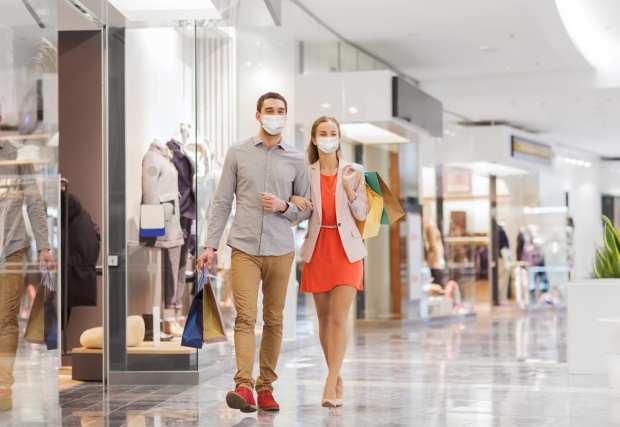COVID-19 Spikes Hinder Retail Recovery

Back in late March when the pandemic first started to lock down retailing, PYMNTS published the first in a series of tracking reports showing clear evidence that the overwhelming factor in economic recovery would be one thing: COVID-19 and the ability to mitigate its effects. That finding is now being played out in stark contrast across the country. In states where the virus has been under relative control, the retail recovery is on. But in the states that are suffering through new case spikes, the recovery is decidedly off.
Evidence to reinforce the findings appeared to be inevitable as the week closed. In states where cases are spiking — Arizona, Texas, Florida, Georgia and South Carolina — retail foot traffic has slipped, according to new data from data firm Unacast.
According to Unacast, the data shows that a lack of adherence to health protocols like masks and social distancing combined with a rush to reopen businesses could lead to more bad news in the coming weeks.
“A mismanaged health crisis across many states means short-term gains will transform into medium-term sluggishness as social distancing relaxation is reversed and virus fear lingers,” Gregory Daco, chief U.S. economist at Oxford Economics, wrote in an analysis on Thursday. “It’s now evident that the economy is entering Q3 (third quarter) with much less momentum than previously anticipated.”
PYMNTS CEO Karen Webster referred to the research and “virus-first” imperative in her most recent column. “Consumers consistently say that a vaccine is what will make them totally comfortable re-engaging, and from what we are hearing from the CDC, that is probably a year away,” Webster wrote. “As hard and as fast as pharma companies are working, it will take time for a vaccine to be approved and then distributed to healthcare providers. The longer that takes, or the longer it takes for a reliable therapeutic to become available, the longer that consumers will have to buff up their digital shopping skills, the longer brands will have to buff up theirs, the longer digital intermediaries will have to capture more of the consumer’s attention, and the longer physical retail will have to keep up.”
Again, that scenario is playing out this week. New York, which was hit the hardest but implemented the strictest lockdown measures, is starting to climb out of the pandemic ditch. According to artificial intelligence data firm Placer.ai, overall retail visits in New York were down 22 percent year over year the week of June 15th, compared to visits up 5 percent year over year for the week of March 9th. However, the June numbers “showed a marked improvement on previous weeks” and was the strongest showing for retail markets since the March 9 data.
Different markets within the retail industry are suffering more than others: Apparel shop visits are down 49.7 percent compared to 2019, while hardware stores like Home Depot and Lowe’s are seeing a 27.3 percent increase.
“Until there’s a vaccine and/or effective palliative drugs, unless this mutates into something less infectious, we’re in for a terribly bumpy ride,” says Columbia University director of retail studies Mark Cohen. “If they’re doing business on the internet, as many are, they’re going to have to get more effective and efficient. They’re also going to have to reconcile themselves to the fact that the economic damage that this pandemic has brought with it and will continue to bring with it is going to necessarily cause their performance to change.”
